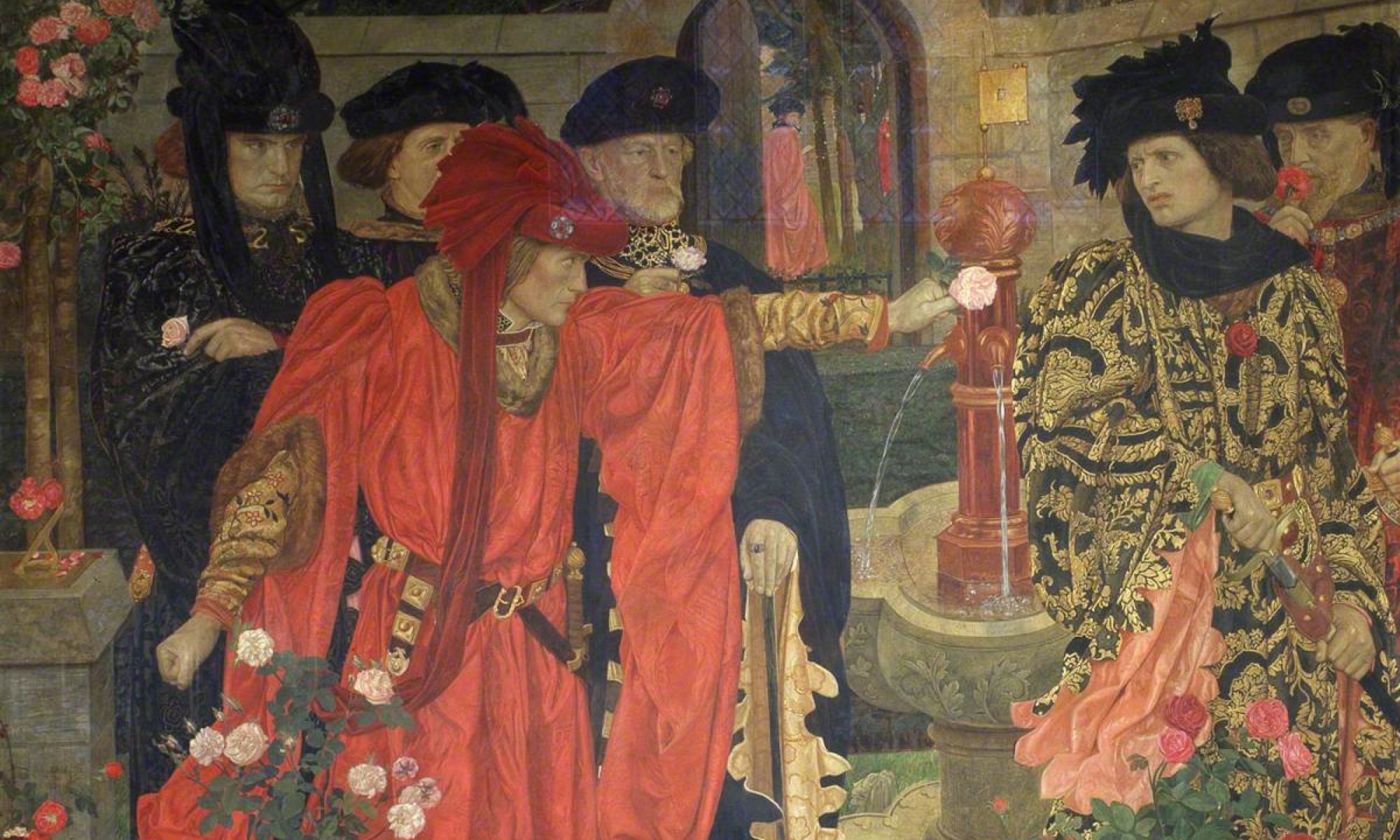As is originally discussed in our written response to Dawn M. Goode’s ‘Duelling Discourses: The Erotics of Female Friendship in Mary Pix’s Queen Catharine’, Pix subtly presents a homoerotic relationship between the two heroines, Catharine and Isabella. However, Goode comments how these ‘intimate female romantic relationships, like that between Catharine and Isabella, can occur only as the result of such isolation from the normative interactions between men and women’, as the introduction of Edward’s patriarchal Court into Catharine and Isabella’s sphere leads to the eventual demise of both characters and their relationship through Isabella’s decision to betray Catharine and give her enemies a key into the underground castle vaults.[1]
The difficulties of portraying a homoerotic relationship that Goode describes in seventeenth-century England are still a topic in today’s society, with issues such as marriage equality in Northern Ireland confirming LGBTQ rights as a constant source of dispute. Just last year, Trump’s tax reform bill sparked enormous opposition within the LGBTQ community for its detrimental impact on the gay community, as programmes offering healthcare support – such as Medicare and Medicaid – that help in the treatment of HIV and AIDs were threatened with cuts. This forward-thinking tack thus invites Pix’s play into modern debate, as the downfall of Isabella and Catharine’s romantic love has the potential for a modern retelling as a social critique on homophobia that is still widespread in present-day culture.
Furthermore, not only does a modern retelling necessitate a discussion of gay rights in our society, but more specifically it invites a deeper look at equality for lesbian women in our culture, and the bigotry they face. There is even a term for such discrimination, ‘lesbophobia’, that ‘[emphasises], and simply [designates], the hostility experienced by lesbian women […] that is rarely talked about, because they are women and they are, as such, confronted with sexism.’[2] In a modern retelling, Edward’s Court could be representative of the modern-day patriarchy feeling threatened by females who do not fit into a heteronormative stereotype. As is discussed by Jane Czyzselska in her opinion piece for The Guardian, such men as these ‘are so invested in a cultural narrative that requires a heterosexual female support act […] that they label women who transgress this social rule as legitimate targets for abusive behaviour.’[3] Due to the breakdown of Isabella and Catharine’s homoerotic relationship beginning as Edward and his male-centred Court were reintroduced into Catharine’s social space, there is certainly room for imitation between, on one hand, the banishment of Catharine and the forced marriage of Isabella and, on the other, modern-day abusive behaviour that gay and bisexual women face daily in a similar hetero-favoured environment, as they threaten the hyper-masculinity of modern-day society.
In a similar veiw, the separation of Pix’s heroines by death in the closing act, when Isabella is stabbed and killed by a member of the patriarchy, could take a modern form as the separation of two female lovers by the establishment set in Northern Ireland, Western society, not unfamiliar to more liberal audiences, which nevertheless refuses Lesbians the right to marry. As Catharine and Isabella are denied the right to continue in their ‘gynocentric space’, our modern lovers would also be refused the right to transgress the patriarchal social hetero-normative of being joined in matrimony: they are thus separated forever in the eyes of the law.[4]
[1] Dawn M. Goode, ‘Duelling Discourses: The Erotics of Female Friendship in Mary Pix’s Queen Catharine‘, Restoration: Studies in English Literary Culture, 1660-1700’, 32:1 (2008), pp. 37-60 (p. 44).
[2] S. Arc and P. Vellozzo, ‘Making Lesbophobia Visible’, Nouvelles Questions Feministes, 31:1 (2012), pp. 12-26, (p. 12).
[3] Jane Czyzselska, ‘Lesbophobia is Homophobia with a Side-Order of Sexism’, The Guardian, 9th July 2013.
[4] Dawn M. Goode, p. 44
